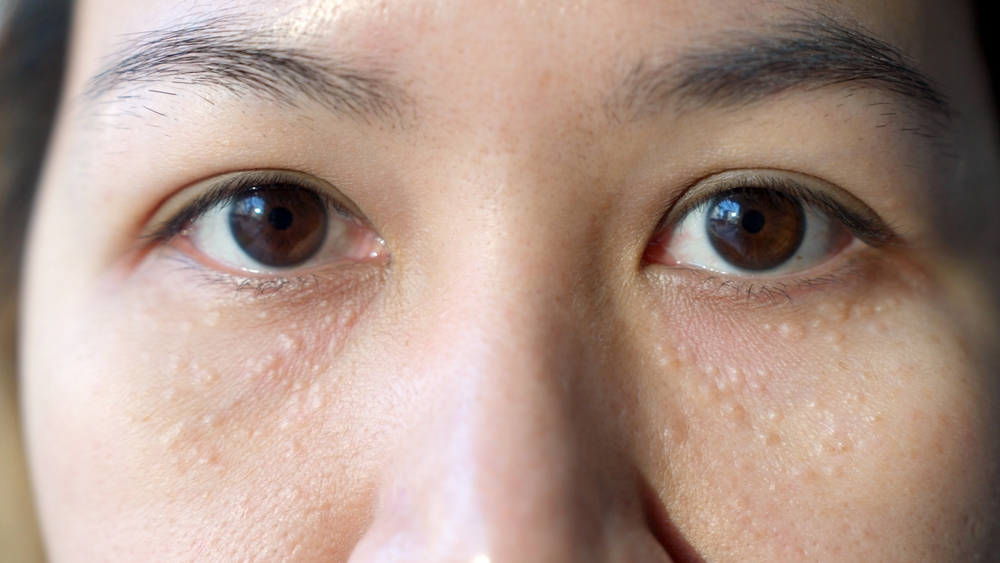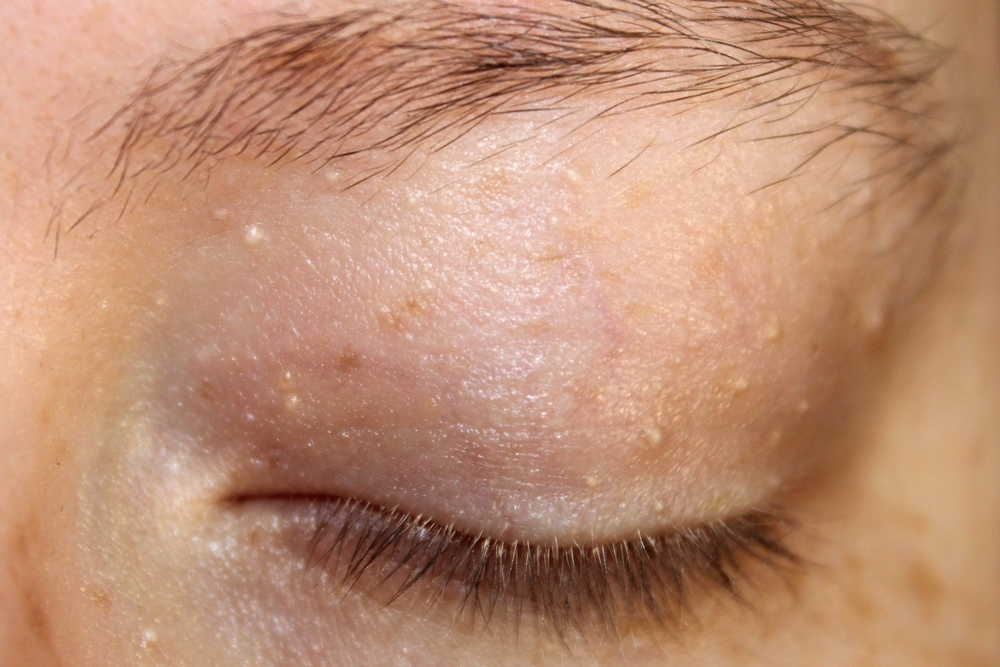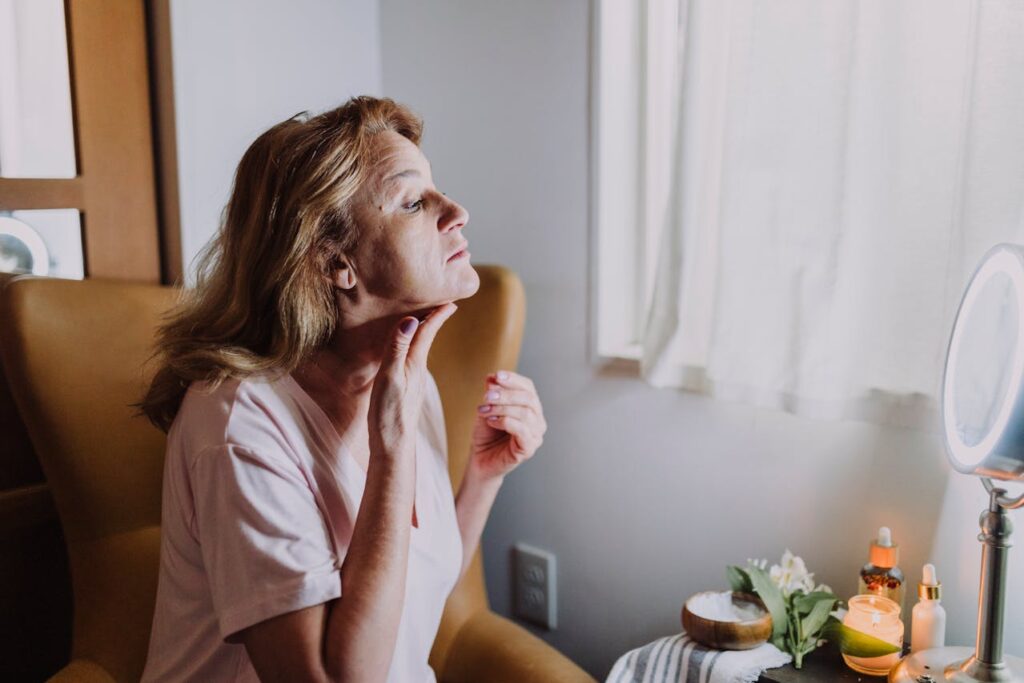Experts Reveal the Hidden Meaning Behind Mysterious White Spots on Your Skin and What They Say About Your Health

Most people only look at their skin in the mirror. Few ever stop to listen to it. But your skin speaks in its own language. Sometimes it whispers through a glow after a good night’s sleep. Other times, it sends a quiet message in the form of a tiny white dot, a new freckle, or a dry patch that seems to appear out of nowhere. These small details are not random. They are the body’s way of saying, “Something’s happening beneath the surface.”

Lately, dermatologists have noticed more people asking about mysterious white spots that show up on their face and even on private areas. Most of these are harmless, but they still make people pause and worry. The truth is, the skin reflects far more than beauty or age. It mirrors stress, hormones, and even the quiet battles your body fights each day. The question is not just what these spots are but what your body might be trying to tell you through them.
The Silent Language Beneath Your Skin
Our bodies are storytellers, and the skin is one of their most eloquent narrators. It protects us, reflects us, and sometimes, it surprises us. Those tiny white spots that suddenly appear on your face or even on intimate parts of your body often come without warning, sparking curiosity and sometimes fear. Yet these little marks, known as milia, are not invaders. They are signs of how the body renews itself, reminders that even beneath calm surfaces, there is constant work taking place.
Milia form when keratin, a natural protein in your skin, becomes trapped just below the surface instead of being shed. Over time, it hardens into a small, pearl-like bump that can feel smooth and firm to the touch. These tiny cysts may show up after sun exposure, a skin injury, or from using thick creams that slow natural exfoliation. They can appear anywhere, but the face, especially around the eyes and lips, is their favorite canvas. According to dermatologist Dr. Marnie Nussbaum, “Milia are tiny keratin-filled cysts on the surface of the skin.” She explains that they are not acne or whiteheads because they contain solid keratin, not liquid sebum or bacteria, which is why they do not pop or fade like pimples.

Unlike acne or viral conditions, milia are not a reaction or infection. They are simply a reflection of the skin’s slow renewal rhythm. They do not spread or cause pain, but they can linger, testing your patience and tempting you to interfere. The truth is, your skin is always speaking to you, even in whispers like these. Every small mark holds a clue to how your body heals, renews, and protects itself from the world it faces every day.
The Hidden Conversations Between Your Body and the World
Every mark on your skin has a reason for being there. It is not random or meaningless; it is part of a quiet conversation between your body and everything it touches. Those small white bumps we call milia are not only formed by what you put on your skin but also by what happens within it. The body is constantly balancing hormones, repairing damage, and responding to the air, the sun, and the stress you carry. When this balance shifts, the skin speaks.

Dermatologists explain that milia often emerge when the natural rhythm of skin renewal slows or becomes disrupted. Hormonal changes during puberty or pregnancy can alter how the body produces keratin, the protein that keeps the skin strong yet flexible. When keratin hardens beneath the surface instead of being shed, these tiny cysts begin to form. Overexposure to sunlight or heat can make the outer layer of skin thicker, making it more difficult for dead cells to shed, while heavy creams and cosmetics can act like a seal, trapping what the skin is trying to release. A review in the Journal of the American Academy of Dermatology describes how the skin’s healing process after burns or injury can also lead to milia, as keratin becomes locked beneath layers of new tissue.
In some cases, recurring milia can hint at deeper issues, such as long-term use of steroid creams or certain skin conditions that interfere with normal cell renewal. Lifestyle habits also leave fingerprints on your skin. Lack of hydration, nutrient deficiencies, and smoking can all slow regeneration, making it harder for the body to clear what it no longer needs. When you see these small bumps, it is not just about vanity. It is a signal that your skin may need care, balance, or even rest. To understand milia is to recognize that the skin is not separate from your inner life. It is your body’s most visible mirror, always reflecting the quiet story of your health.
The Emotional Skin We Wear
Our skin does more than protect us; it translates emotion into form. When we blush, it reveals joy or embarrassment. When we pale, it reflects fear. And sometimes, when white bumps or irritation appear without warning, they echo the tension that sits just beneath the surface. Science often focuses on the physical reasons behind skin changes, but emotional stress is one of the most overlooked triggers of imbalance. Chronic anxiety and poor sleep can disrupt hormone levels, slow cell renewal, and weaken the barrier that keeps the skin calm and clear.

Dermatologists have long recognized a direct relationship between the mind and the skin. Studies on psychodermatology show that stress can stimulate the production of cortisol, a hormone that influences oil glands and inflammation. When cortisol stays high for too long, the skin may heal more slowly, retain dead cells longer, or react with unexpected breakouts and texture changes, sometimes resembling milia. This means the way we think, rest, and breathe can literally shape what we see in the mirror.
Taking care of your skin, then, is not only about what you apply on the outside but also how you nurture yourself from within. Meditation, deep breathing, and mindful habits can lower stress hormones and restore balance to the skin’s natural rhythm. It is a reminder that every small act of calm is not just for your mind; it is for the body that quietly reflects it. The skin, in its wisdom, keeps no secrets. It mirrors how gently or harshly we treat ourselves.
The Science of Touch and the Skin’s Memory
Every touch leaves a trace. Your skin remembers the warmth of the sun, the scrape of childhood falls, the pressure of stress when you furrow your brow, and even the stillness of a calm breath. It is not only the largest organ of the body but also one of the most intelligent, wired with millions of nerve endings that constantly communicate with your brain. Recent research in dermatological neuroscience shows that the skin and the nervous system are deeply connected, formed from the same embryonic tissue before birth. This connection explains why emotional experiences can physically alter the skin’s condition, influencing sensitivity, inflammation, and healing speed.

When you touch your skin, whether through skincare, self-care, or simply resting your hand on your heart, you are signaling safety to your nervous system. This quiet act can lower cortisol, stabilize the immune response, and even improve the skin’s ability to repair itself. The same is true in reverse: harsh handling, chronic tension, or neglect can train your skin to stay in defense mode, slowing its natural rhythm of renewal. True skincare, then, is not just about external treatment but about the intention behind each touch. When you handle your skin gently, you remind your body that it is safe to heal.
The Mirror That Never Lies
Your skin is more than a surface; it is your body’s living journal. Every freckle, scar, and mark is a sentence written by time, environment, and emotion. It tells stories that often go unnoticed until they demand your attention. Those small white bumps, the changes in texture, even the glow after a good rest are not random. They are your body’s language, revealing how you live, eat, think, and feel.

When you start listening instead of judging, your skin transforms from something to fix into something to understand. Every act of care becomes a conversation. Every moment of stillness becomes medicine. The journey to clear, balanced skin is not about chasing perfection; it is about learning fluency in the language your body speaks. In the end, the real beauty lies in awareness, the quiet power of being present in your own skin and finally hearing what it has been trying to say all along.
Featured Image from Shutterstock
Loading...

